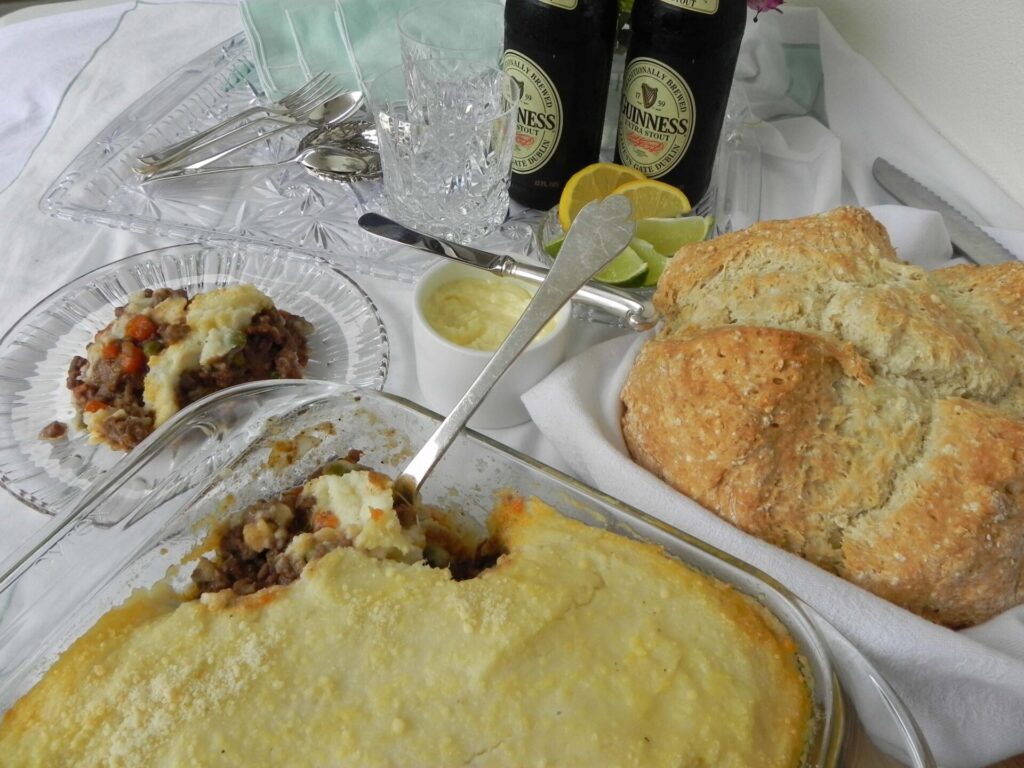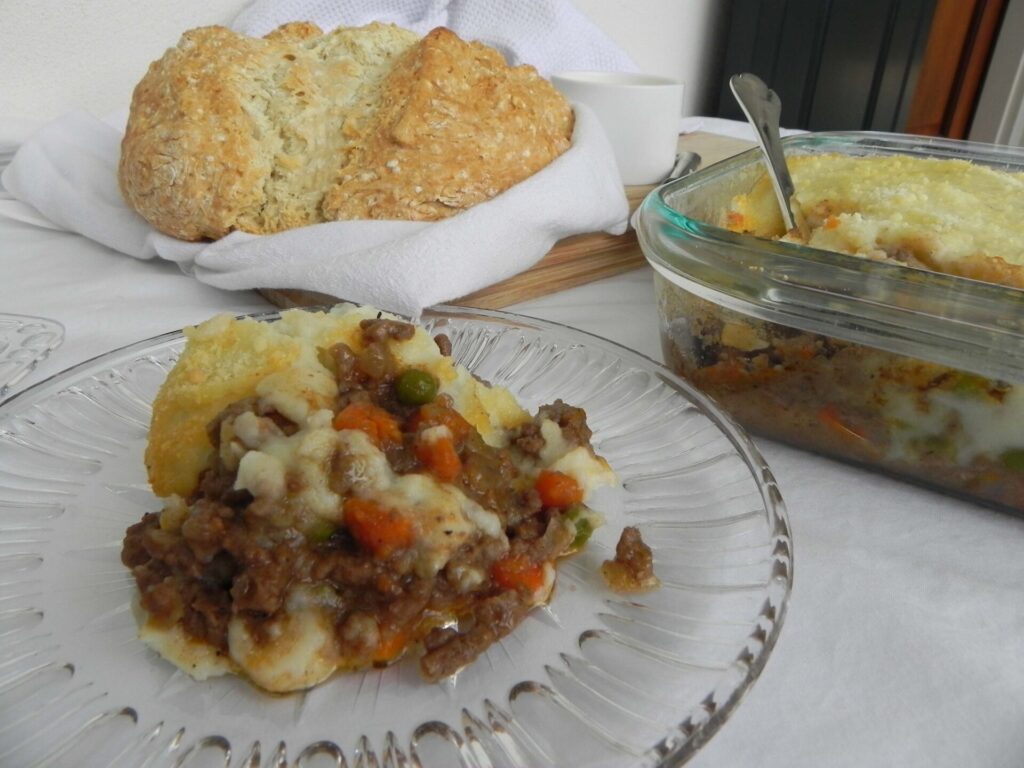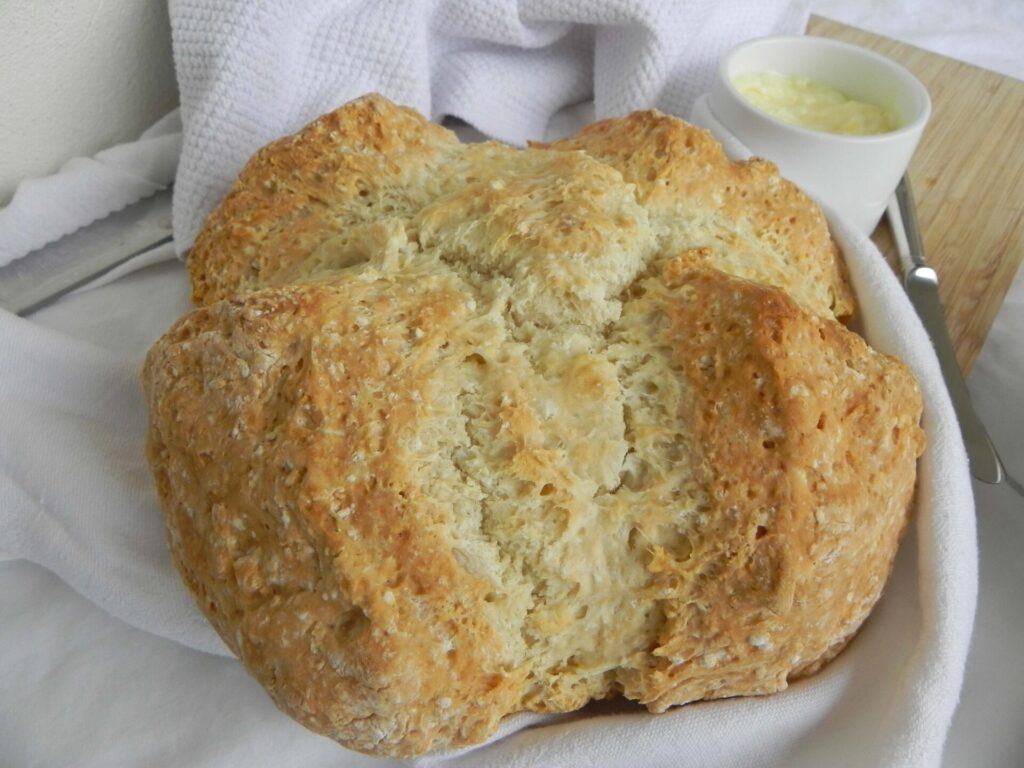SOUTHERNISM OF THE WEEK
My ice is getting dry: A typically Southern descriptive way of simultaneously making a statement of fact and implying that the situation is unacceptable and action is needed; specifically, that the beverage “wetting” the ice is almost gone and the tumbler needs refilling … now!
MAY THE LUCK OF THE IRISH BE WITH US
Here we are in one of the flashiest weeks in calendar history. The Ides of March (15th) is that date in history that didn’t go so well for Julius Caesar. And March 17th honors St. Patrick, who is said to have driven all the snakes from Ireland.
There’s a party waiting to happen in this calendar somewhere, but it’s not in celebration of a public assassination. We Americans save our toga parties and Roman orgies for other dates.
On the other hand, we love to dye our rivers green and hold parades on St. Patrick’s Day. We’ve made the date a national party holiday, sort of like Mardi Gras with a lilt. Every year, St. Paddy’s Day comes as a welcome break after a hard, cold winter like the one we’ve just endured.
The local weather’s still nothing to write home about, but we Southerners don’t mind. It provides an excuse to revert to old-fashioned home cooking, harking back to our region’s Irish and Scots-Irish heritage.
One of the best of the old dishes is Shepherd’s Pie, the perfect soul-satisfying comfort food that can be stretched to feed a crowd on a wet and chilly evening. What’s more, it freezes well, so the cook is justified in making up a goodly batch.
Pair the pie with homespun Irish soda bread, and all that’s needed after dinner is a dram of Irish whiskey or a snifter of Bailey’s Irish Cream.
We Americans know a good excuse for whetting one’s whistle when we see one, and nothing beats a bit of Irish cheer, liquid or savory — or both.
SHEPHERD’S PIE Shepherd’s Pie is a staple of traditional Irish cooking. Variations occur throughout the British Isles, with the Brits favoring lamb while the Irish favor beef.
Meat filling:
4 T extra light olive oil
1 large white onion, chopped fine
2 lb ground round
1/2 tsp ground thyme
2 cloves garlic, minced
1 tsp salt
1/2 tsp ground black pepper
12-oz pkg frozen peas and carrots
2 T flour
2 T Worcestershire sauce
2 T ketchup or tomato paste
1/2 c red wine (cooking wine is fine)
1 c chicken stock or beef stock (I prefer chicken)
Heat the olive oil and butter in a large skillet. Add the onions and sauté until transparent. Add the ground beef, garlic, salt and pepper and simmer until meat is browned. While meat is browning, steam the peas and carrots until carrots are tender. Add to the meat and stir to blend. Sprinkle with flour and stir. Add the Worcestershire, ketchup, and red wine. Simmer for about two to three minutes before adding the stock. Simmer until the liquid reduces and forms thick gravy. Remove from heat.
Mashed potato topping:
 3 large russet potatoes, peeled and sliced about 1/2-inch thick
3 large russet potatoes, peeled and sliced about 1/2-inch thick
4 T salted butter
1/2 c heavy whipping cream
1/2 tsp salt
1/8 tsp black pepper
2 T Mexican fiesta-blend grated cheese
1 egg, beaten
Grated Parmesan cheese
Place sliced potatoes in a 3-qt saucepan and cover with water. Boil about 10 minutes, until fork tender. Drain off liquid and add butter. Mash with a potato masher or two forks until smooth. Mash in the cream, salt and pepper and stir until blended smooth. Add the cheese and blend until melted.
Pie assembly: Spread meat filling evenly in a 9-by-9-inch baking dish. (If using an 8-by-8 dish, there will be enough overflow to add a 7-1/2-by-5-inch dish.) Top filling with mashed potatoes and smooth it like frosting. Brush a thin wash of beaten egg evenly over the topping and sprinkle with Parmesan. Place on the baking sheet; bake on center rack for 20-25 minutes, until filling is bubbly.
IRISH SODA BREAD This simplest of breads requires no rise time. Irish farmers always had buttermilk on hand, along with flour, salt, soda and a bit of sweetener such as honey or molasses. The bread bakes up with a crusty exterior and moist crumb interior. Feel free to add currants or raisins and finish the baked bread with a sugar glaze. Several modern variations call for whole-wheat pastry flour and oats.
1 tsp salt
1 tsp baking soda
1 tsp baking powder
2 T white granulated sugar
1-1/2 c whole buttermilk
2 T melted butter
Preheat oven to 375˚F. Line a baking sheet with parchment paper.
Sift all dry ingredients together twice in a large bowl. Make a well in the center and add the buttermilk and melted butter. Fold together with a large spoon or spatula until dough begins to come together. Use hands to pull it together.
If too sticky to handle, sprinkle with a bit of flour. If still shaggy, add a bit more buttermilk. Fold it over gently a few times and shape into a round. Place dough round on the baking sheet and cut a large “X” in the center to promote even baking.
Bake about 40-45 minutes, until dark golden brown. Test center with a toothpick; it’s done when toothpick comes out clean. Cool on wire rack about 10 minutes before slicing.
Laurie Triplette is a writer, historian and accredited appraiser of fine arts, dedicated to preserving Southern culture and foodways. Author of the award-winning community family cookbook GIMME SOME SUGAR, DARLIN’, and editor of ZEBRA TALES (Tailgating Recipes from the Ladies of the NFLRA), Triplette is a member of the Association of Food Journalists, Southern Foodways Alliance and the Southern Food and Beverage Museum. Check out the GIMME SOME SUGAR, DARLIN’ website and follow Laurie’s food adventures on Facebook and Twitter.



